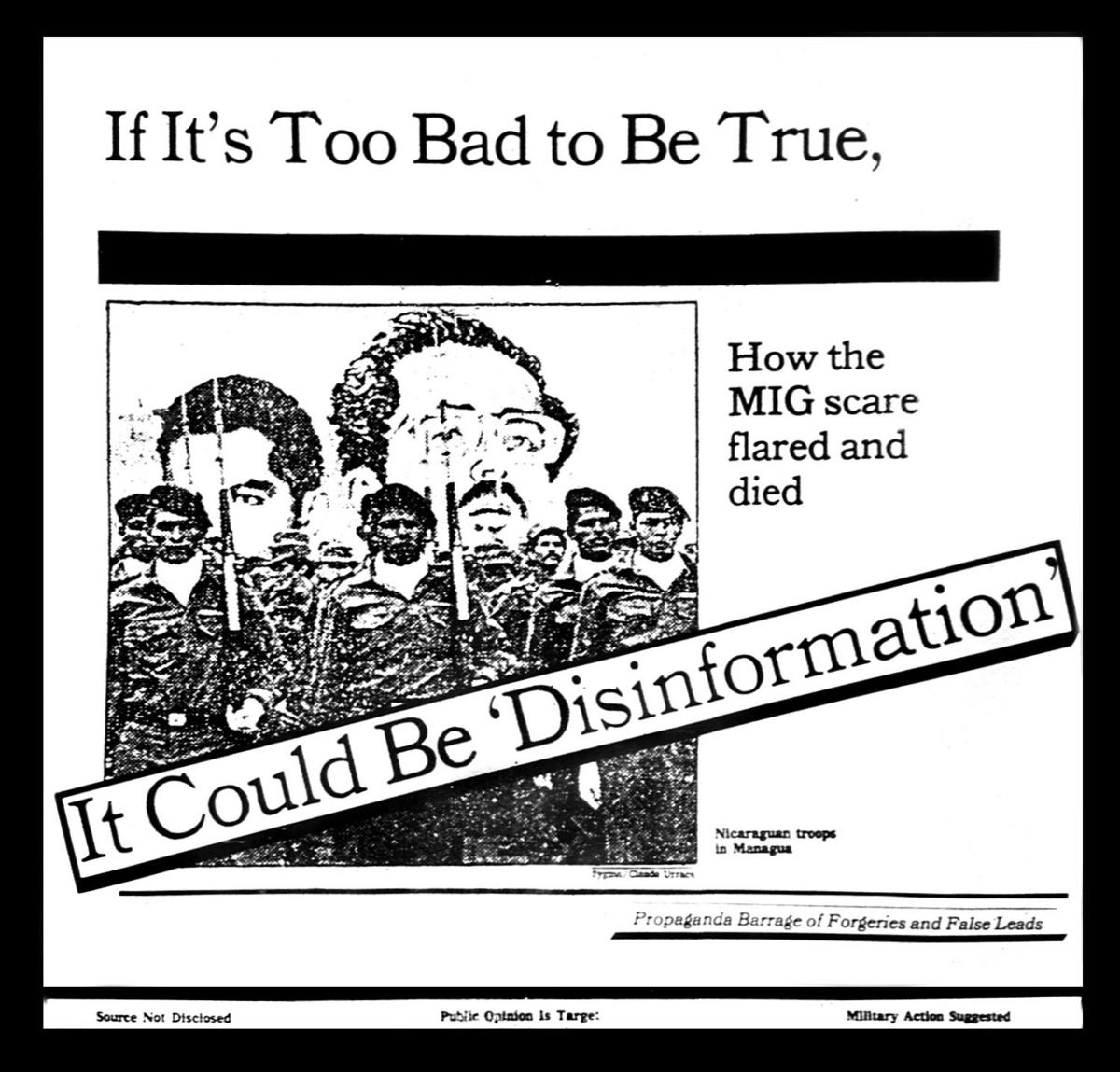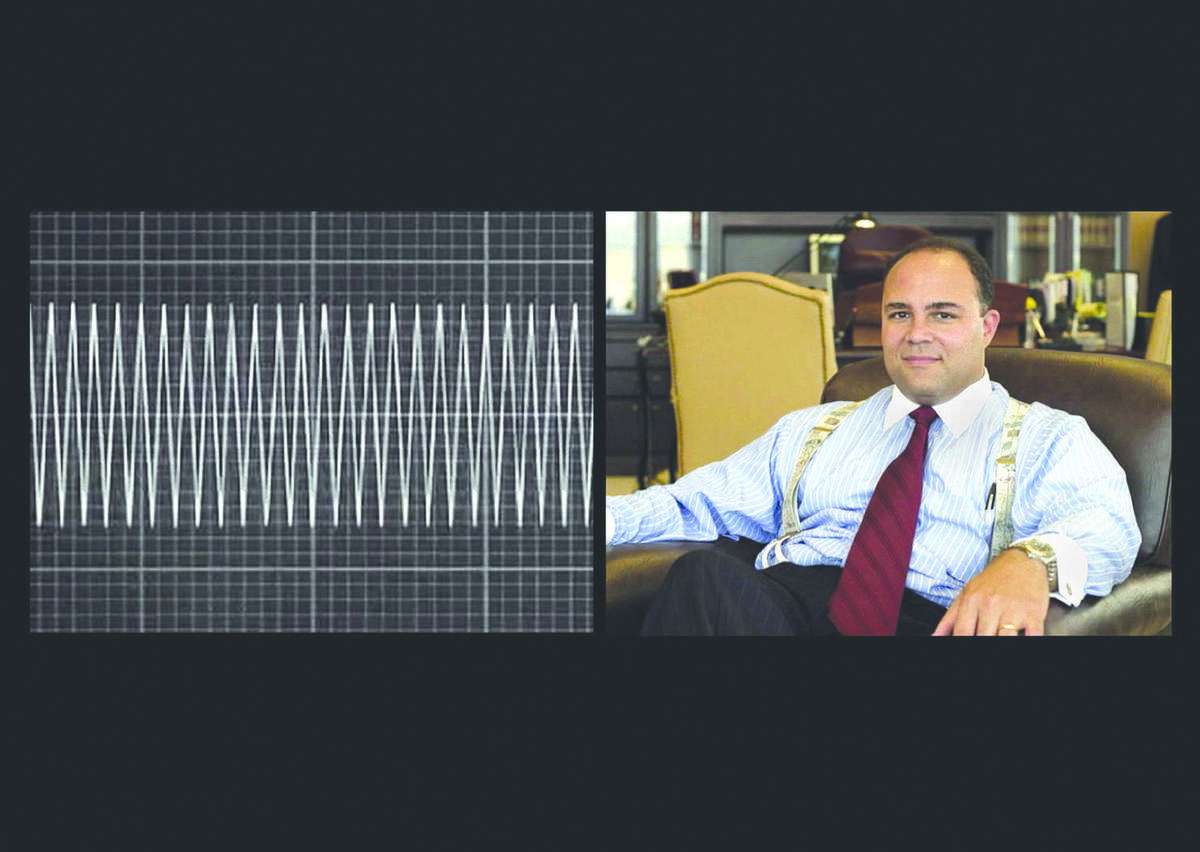
New York
If It’s Too Bad To Be True, It Could Be Disinformation
Apexart
October 19–November 26, 2005
Mercedes Vicente’s recent exhibition at apexart, ‘If It’s Too Bad To Be True, It Could Be Disinformation,’ explores the phenomenon of media conglomeration and the official control and manipulation of information. With a surprisingly wide range of media, the show both symptomizes and comments on the current state of the media and the nature of information circulation —reflecting both the threat of the extraordinary manipulation of information itself and the uncertainty of just how to combat it. Moreover, this exhibition also underscored the problems that “political” artists face in confronting such issues. Are artists more successful at making political statements when they act as aesthetes or activists?
Some of the works in the show are so forthright in their mes sage that they read like agitprop. The 1985 work by Martha Rosler after which the exhibition was titled, and Paul Chan’s The question of democracy is an extremely complicated one, 2005 and Untitled (for a long time to come), 2005 appear to emphasize the parallels between the canonically evil “them” and the good “us,” calling attention to how state-manipulated information is not simply other people’s problem. Rosler uses blown-up Cold War–era newspaper articles, video that references the American propaganda machine, along with historical quotations relating to totalitarianism’s comparable management of information. Chan displays a photocopy of Saddam Hussein’s writings on democracy on a table, the familiar democratic rhetoric Hussein espouses is meant to confusingly appear as true — and thus false — as the democratic rhetoric used in the West. Their points are perfectly valid, and in Chan’s work especially startling, but at times the execution can be so self-consciously serious that the significance of the idea is paradoxically diminished.
Offering some humor is The Yes Men’s Dow Chemical Identity Correction, BBC World Service, 2004 and 0100101110101101.ORG’s Nikeground, 2003 which both use the anonymity of the internet to wreak havoc on large corporations (Dow Chemical and Nike, respectively). Unlike the aforementioned works, you become genuinely engaged with the ideas here precisely because of the intrinsic fun of pranksterism. In Dow Chemical Identity Correction we see the evolution of a hoax in three videos in which Dow Chemical’s website is mimicked in order to spread the news that the company is accepting and paying out 12 billion dollars to the victims of the Bhopal disaster, which is then dutifully reported as fact by the BBC. In Nikeground the collective 0100101110101101.ORG replicated Nike’s website to put out the news that Karlsplatz in Vienna was to be renamed Nikeplatz. The piece consists of a laptop with the fake website and a series of increasingly absurd printed emails in which fake Nike distributors go back and forth with unsuspecting buyers about the nature of “real” Nike shoes, with often hilarious results. The amusement holds your attention long enough to challenge you to decide whether the instigators’ “fake” information is in fact exposing a truth and whether the “real” companies are the ones propagating a lie; they cleverly use humor to encapsulate the way we are continually fed information with an agenda, resulting in (oft-intended) confusion.

The show also had poetic moments of exploring the nature of information itself. A work by The Speculative Archive/Julia Meltzer and David Thorne entitled There may come a time when these places will be no longer and all we will have left are the pictures: a selection of incidents of photographing or videotaping by persons of interest at various sites of interest, referenced with images from other sources consists of a series of small photographs of American monuments and other familiar sites such as the Golden Gate Bridge, the Statue of Liberty and the Houston skyline, coupled with a blacked-out print — ones presumably of the same subject but credited to photographers who were detained for taking images of these particular sites. The scale and rhythmic pacing of the photos, from blacked out to full color to blacked out to full color, allow for quiet reflection on the larger nature of the presented information. If something is omitted from our experience, can we still experience it as truth? Who is allowed to present these images to us and why? And, more practically, are we too trusting in what we are told (in the captions here, for example) in spite of our actual experience?
Far more raucously boundless in its use of material is neuroTransmitter’s Frequency Allocations (in 3 parts), 2005. The viewer sees media conglomerates on video through utterly direct imagery in the form of towering buildings projecting power with endless lists of the companies that are situated within those steely citadels rolling by. At points the imagery seems contrived: the sequence of the looming Disney building, for example, is accompanied by promotional audio declaring that Disneyland will become “a source of hope, joy and inspiration to all the world.” But here a solution is offered: images of instructions on how to make your own radio transmitter are spliced into the video and juxtaposed with a chart nearby that maps out airwave administration and ownership. Frequency Allocations stands as a small call to individual action against the untouchable conglomerations.
The variations in approach here were appropriate for the broad scope of the show’s topic, but they also expose a persistent ambiguity amid political art making. On the one hand, the earnestly outspoken, almost endearingly heavy-handed imagery of neuroTransmitter serves as testament to the power of information, information that can then be acted upon. On the other, the advantage of art’s more subtle, and perhaps more powerful, ability to communicate visually and imperceptibly is used more sensitively by artists such as The Speculative Archive. The show was illuminating both reflexively — as a disseminator of information itself — and as a picture of the state of political art making, the breadth of approaches and results come into focus under the unifying subject of information control. Here we can see not only the diversity of media being used to confront political issues, but the scope of the artists’ attitudes as well. The volume is turned up and down continually to see which voice can be heard, and, surprisingly, the silliest or quietest utterances are sometimes revealed to be the most formidable.